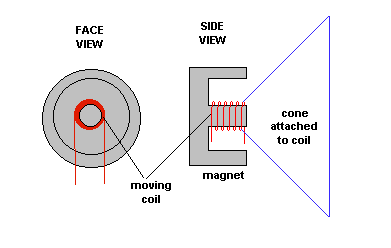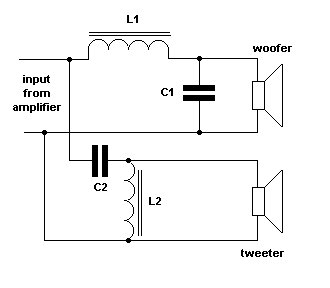

| The most common
type of loudspeaker is the MOVING COIL speaker, where a coil of wire is
suspended in the magnetic field of a circular magnet.
When a speech current is passed through the coil a varying magnetic field is generated by the coil. The two magnetic fields interact causing movement of the coil (see the page on the MOTOR PRINCIPLE). The movement of the coil causes a cone, which is attached to the coil, to move back and forth. This compresses and decompresses the air thereby generating sound waves. The loudspeaker is a TRANSDUCER converting one form of energy to another. Loudspeakers
have Impedance, typically 4 or 8 ohms.
Loudspeakers
are mounted in enclosures (boxes).
Large speakers
cannot reproduce high frequencies and small ones cannot reproduce low frequencies.
To ensure that the correct frequencies go to the desired speaker, a Crossover Unit is used. In the diagram,
C1 and L1 are a low pass filter.
When using two
speakers together, as in stereo systems, they must be in phase.
Speakers can
be connected in series and parallel but the total impedance must match
the amplifier impedance.
|

